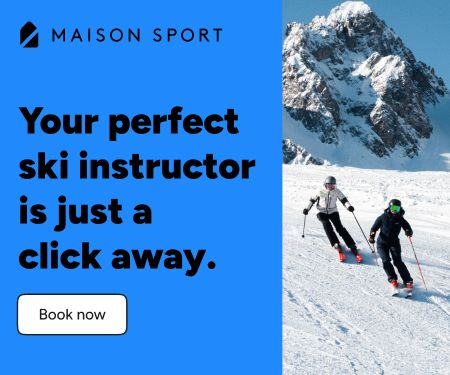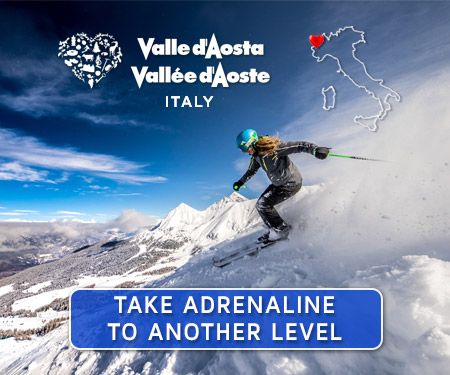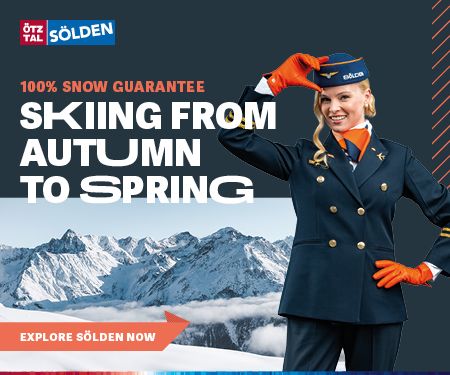Dan Lever
Dec, 28 2023- 9 mins
Your Guide to Buying a Ski Jacket
With a wide range of differing ski jackets available varying in material, cost, quality and functionality, navigating the 100s if not 1,000s of options available is not an easy one! The right ski jacket can be the difference between a comfortable day on the slopes and a cold, wet, miserable experience. It's essential to protect yourself from harsh weather, ensure warmth, and enhance your skiing by matching your style of skiing with the perfect jacket.
Types of Ski Jackets
Shell Jackets
These are lightweight and breathable, primarily designed to protect against wind and wetness. While they offer no inherent insulation, they're excellent for layering, allowing flexibility in varying conditions. They also offer excellent breathability allowing you to dump heat when you need to. One of the most effective ways of staying warm is to avoid a build up of moisture or sweat which will make you cold as soon as you stop working. Technical gear helps to wick away this moisture so you can keep warm and comfortable.
These jackets tend to be made out of specialised materials such as Gore-Tex and the even more rugged Gore-Tex Pro. They can often be found with a 2-Layer, 2.5-Layer or 3-Layer construction. A 2-Layer construction means the Gore-Tex membrane is bonded only to the outer lining and not the inner lining. The loose liner inside can provide more comfort. 3-Layer is more rugged and durable (and usually more expensive too) with the Gore-Tex membrane sandwiched between an outer fabric and a robust inner liner. These jackets can have a stiffer feeling and also be quite loud as the stiff fabric rustles as it moves (particularly with the very durable Gore-Tex pro) which is something to bear in mind.
Pros: Lightweight, versatile for layering, offers extreme protection against wind and moisture.
Cons: Lacks built-in insulation, may require multiple layers underneath in extreme cold. Typically the more durable, the stiffer the feel and the ‘louder’ the jacket can be.
Suitable for: These jackets are probably not the ideal solution for your average resort skier that cruises around green and blue runs. They are intended for the very aggressive skier that is likely to ski some gnarly lines and need some serious protection against the elements and any exposure they may encounter during falls. These are the most ideal solution for backcountry skiers and touring skiers where weight and adaptability matter. Easy to pack down or remove layers on the way up and then add layers as necessary for the ski down. If you want a warm, cosy, insulated jacket to serve you while you sit around for long lunches, eating fondue, there is probably a better solution for you!
Insulated Jackets
As the name suggests, these have built-in insulation, keeping you warmer without the need for many layers underneath. A great choice if you are looking to reduce hassle and don’t need the versatility that comes with a layering system.
Jackets come with various degrees of insulation so think about your style of skiing. The more gentle your skiing and the more you are likely to be standing around / sitting around at lunch outside, the heavier the insulation weight you want to go for. If you ski more aggressively and get quite warm, consider a lighter weight insulation. Choose your jacket weight carefully as the heavier the insulation the bulkier and less versatile the jacket will be in fluctuating temperatures.
Pros: Provides consistent warmth, simpler as no need for many under layers.
Cons: Can be bulkier; less versatile in variable temperatures.
Suitable for: Resort skiing and cold conditions, especially for those who feel cold easily.
Parka Jackets
The jacket for extremely cold temperatures or if you are likely to be standing around a lot. Typically longer, reaching the thighs or below, providing extra warmth especially to the lower back and seat area. Not the perfect choice for the everyday skier but more suitable for ski coaches or other mountain professionals such as ski patrol who are likely to be stood around for long periods of the day in very cold weather.
Pros: Extended warmth due to longer length, added protection to lower back.
Cons: Can hinder movement because of the length.
Suitable for: Very casual skiers, lifties, coaches and mountain staff or those in extremely cold areas.
Key Ski Jacket Features to Consider
Waterproofing: Look for a jacket with a high waterproof rating (often measured in millimeters). The higher the number, the more waterproof the jacket. Ratings are measured in millimeters (mm). A 10k rating (10,000mm) is suitable for light to average snow, while 20k and above is excellent for heavy snow and wet conditions. The better the waterproof rating, the more expensive the jacket but this is an area that we would definitely recommend that you invest in. If the weather turns on you, there is nothing more miserable than being soaked to the core and freezing cold - a real ski day ruiner!
Breathability: Usually paired with waterproof ratings (e.g., 20k/20k). The second number indicates breathability, with higher numbers offering more ventilation. Measured in grams (g). 10,000g is satisfactory for moderate activities, while 20,000g is preferable for intense skiing and snowboarding, ensuring moisture escape.
Insulation: We touched on insulated jackets earlier but just to add another element to this, there are also a variety of insulation materials to consider. Natural down is best for its warmth-to-weight ratio, but remember it can lose insulating properties when wet. Synthetic insulation, on the other hand, retains warmth when damp but might be slightly heavier. Synthetic insulation tends to be more breathable than down too, better allowing for moisture wicking. Remember, staying dry helps you to stay warm!
Seams: Fully sealed seams offer the best protection against moisture ingress in wet conditions.
Ventilation: Look for pit zips or mesh-lined vents to release excess heat. Dumping heat will stop you sweating and staying dry is key! Particularly important for the more aggressive skier - essential for the mogul skier and backcountry adventurer.
Pockets: A variety of pockets are useful – internal pockets for valuables, a dedicated ski pass pocket, and exterior pockets for quick-access items so keep an eye on these.
Hood: An adjustable and helmet-compatible hood offers flexibility. When the weather turns and the wind is throwing sideways ice at your face, having a hood that fits neatly over your helmet and stays secure when you are skiing will make a world of difference.
Snow Skirt: An inner band that prevents snow from getting up the jacket. Particularly important for the powder hounds to stop that snow spraying up to the inside of your jacket and getting you wet.
Adjustable Cuffs and Hem: Vital for sealing in warmth and keeping out snow. Most jackets come with these as standard nowadays but ensure the jacket you are choosing does too to avoid a chilly draft from creeping up your sleeves.
Zipper Quality: Opt for durable, ideally waterproof zippers that can withstand the cold. There is also nothing more annoying than a fiddly zip that is difficult to open and close when you are wearing ski gloves.
Fit and Comfort
Regular vs. Slim vs. Relaxed Fit: It may seem obvious but regular fits most body types; slim is more tailored; relaxed provides extra room for layering. If you are planning to purchase a thinner outerlayer, make sure the fit is relaxed enough to allow you to layer underneath - take your layers with you to the store when you are trying on different jackets.
Flexibility: Test the jacket's range of motion, especially if you're into aggressive skiing. Make sure you feel comfortable and free in your jacket. When trying on your jacket, ski some imaginary moguls, try some squats and bounce side to side to make sure that you will be happy with your choice.
Length: Ideally, it should cover your hips but not hinder your movement. For freeriding and powder skiing, longer to cover the bootay and stop snow spraying up your back is genuinely a good thing but not so long that it restricts you.
Layering Space: Always account for potential layers you might wear underneath. The jacket may look and feel great over a t-shirt but what about over a base layer and a hefty midlayer?
Aesthetics and Style
Pick what you feel comfortable in and that matches your style. Whether you prefer classic, muted tones to vibrant, standout hues, show off your personality. Always worth noting that brighter colours increase visibility on the slopes - It is always easier to pick out your ski buddy when they are not dressed in black like everyone else!
It’s also worth remembering that your ski gear will hopefully last you several years so it could be worth considering a style that will stand the test of time - My Henrik Harlaut style XXXL white snow pants don’t quite work for me now that I’m pushing 40…
Care and Maintenance
Washing: Different brands and materials require different methods of cleaning so always follow label instructions carefully or refer to the brands website for details. Regular detergent can degrade the waterproofing so use tech washes or specialised cleaners for performance gear. Nikwax or Granger’s are popular choices.
Drying: Again follow the instructions on the label but usually you can tumble dry on low which can actually help to reproof technical gear or let air dry.
Maintenance: You can reapply a DWR (Durable Water Repellent) spray when the jacket starts absorbing water instead of repelling. You can find many environmentally friendly options online but again Nikwax and Granger’s are good choices.
Sustainability and Ethical Sourcing
We want to keep the joy of skiing alive for as long as possible! To help support this, it makes send to look at brands that prioritise sustainable sourcing and eco-friendly practices.
If choosing down feathers, look for certifications to ensure the ethical treatment of animals. Many brands such as Patagonia, Picture Organic Clothing, Planks and The North Face have eco-friendly initiatives. Look out for the use of recycled materials for the fabrics, Bluesign-approved fabrics on new ski gear, eco-friendly DWR coatings for waterproofing.
You can also find second hand ski gear on websites such as eBay, Vinted, Gumtree and Craigslist. The latest and greatest colourways doesn’t always mean brand new jackets outperform those of previous seasons and you can save you self a bundle by purchasing second hand.
Price Range of Ski Jackets
You will see that the price of ski jackets ranges significantly starting around $100 all the way up to $1,000 and more at the top end. It is worth being mindful of the features the jacket has, as outlined in this guide, and to make sure that you find a jacket that fits your budget and your style of skiing. Remember, expensive doesn’t always mean better. The top of the line Gore-Tex shell is not going to be right for everyone.
With some brands you can also end up paying for the ‘brand name’ and you may find similar features with other brands that offer better value for money.
Discounts on Ski Jackets
Most ski brands tend to offer some pretty significant discounts and sales at certain times of the year starting as early as ‘pre-season’ starting in September or October, with hefty discounts around the Black Friday period towards the end of November and often even heftier discounts during end of season sales when brands are looking to clear out their stock for that season.
Remember to check out the discounts section on SNOMAD too as we’re always looking to negotiate and secure exclusive discount codes on everything ski related, ranging from jackets to gear, travel and lift passes.
Brand Recommendations
Budget-Friendly Ski Jackets
These brands offer ski jackets at a more affordable price point, often without sacrificing too much in terms of quality and functionality.
- Columbia - Known for solid performance gear at accessible prices.
- Mountain Warehouse - Offers good value for the cost, especially for casual skiers.
- Decathlon (Wed'ze brand) - European-based sporting goods store that provides a range of affordable ski gear.
- Wantdo - Found on platforms like Amazon, they offer basic but functional ski jackets.
- Trespass - UK brand offering a wide range of affordable outdoor gear.
- Arctix - More known for their snow pants, but their jackets offer good value too.
- Montecwear - Good value ski clothing that looks stylish too
- Dope Snow - The sister brand to Montec providing similar value but catered to a slightly younger demographic
Mid-Range Ski Jackets
These brands find a balance between quality, performance, and price. Ideal for recreational skiers and even some enthusiasts.
- The North Face - Offers a wide range of ski jackets with reliable quality.
- Salomon - Known for ski equipment, but also offers well-made ski apparel.
- Marmot - Combines technology and design in their ski jackets.
- Spyder - Popular among ski enthusiasts and offers a range of jackets.
- Helly Hansen - Norwegian brand known for quality and durability.
- Mountain Hardwear - Offers technical gear with good design.
- Planks - A rider-owned ski clothing brand out of the UK known for quality and style.
- Quiksilver - Combines style and function in their snow gear.
- Roxy - Women-focused brand (under Quiksilver) with stylish yet functional jackets.
- Picture Organic Clothing - They stand out for their focus on sustainability and offer solid performance without the highest-end price tags.
- Armada - While their skis can be on the pricier side, their apparel, including jackets, often falls in the mid-range, though they have premium options too.
High-End Ski Jackets
These brands are at the top in terms of quality, technology, and price.
- Arc'teryx - Known for impeccable design and outstanding quality.
- Patagonia - Combines performance with a strong focus on sustainability.
- Kjus - Swiss brand offering top-notch design and technology.
- Moncler - Luxury brand known for style, but their ski jackets are also very functional.
- Mammut - Combines Swiss engineering with high-end materials.
- Haglöfs - Swedish brand with a focus on sustainability, durability, and innovative design
- Ortovox - Well-known for avalanche safety gear but also offer premium outerwear
Bonus Tips
Try Before You Buy: It's always a good idea to try jackets in-store or check online reviews for specific models before purchasing, as individual models can vary in fit, function, and quality even within a brand. Many ski brands offer 30 day free returns or head in store to make sure you are happy with the fit. Remember to wear it with your other ski gear and underlayers.
Warranty: Some higher-end brands offer warranties or repair services which may mean a higher upfront cost but it will ensure the longevity of your jacket.
Matching Gear: Consider the compatibility of your jacket with other skiing gear, like pants or gloves.
If you made it this far, you will have a good idea of the right type of jacket and features for you. Our discounts section is always being regularly updated with new deals on ski gear so be sure to check back regularly when making purchases for all your ski needs.
We look forward to seeing you on the slopes in your new jacket very soon!






